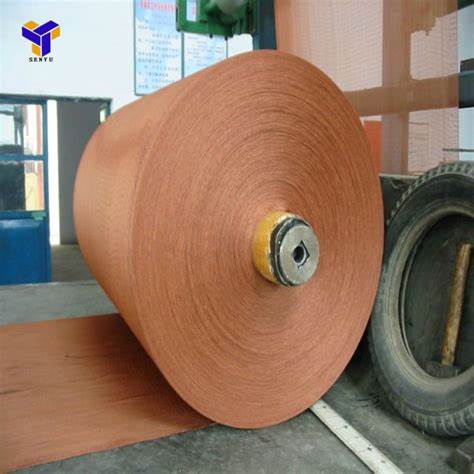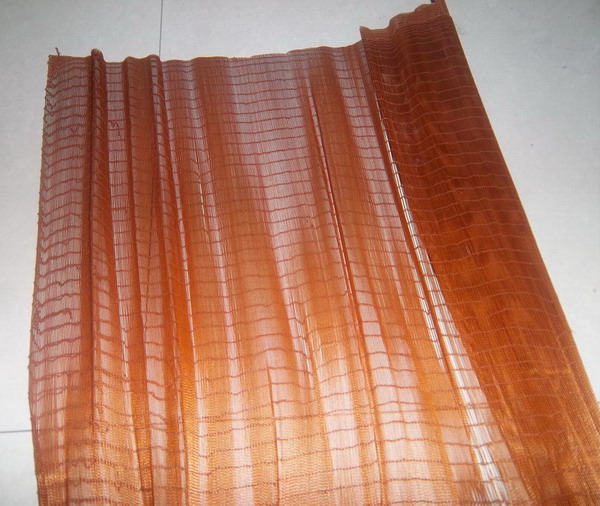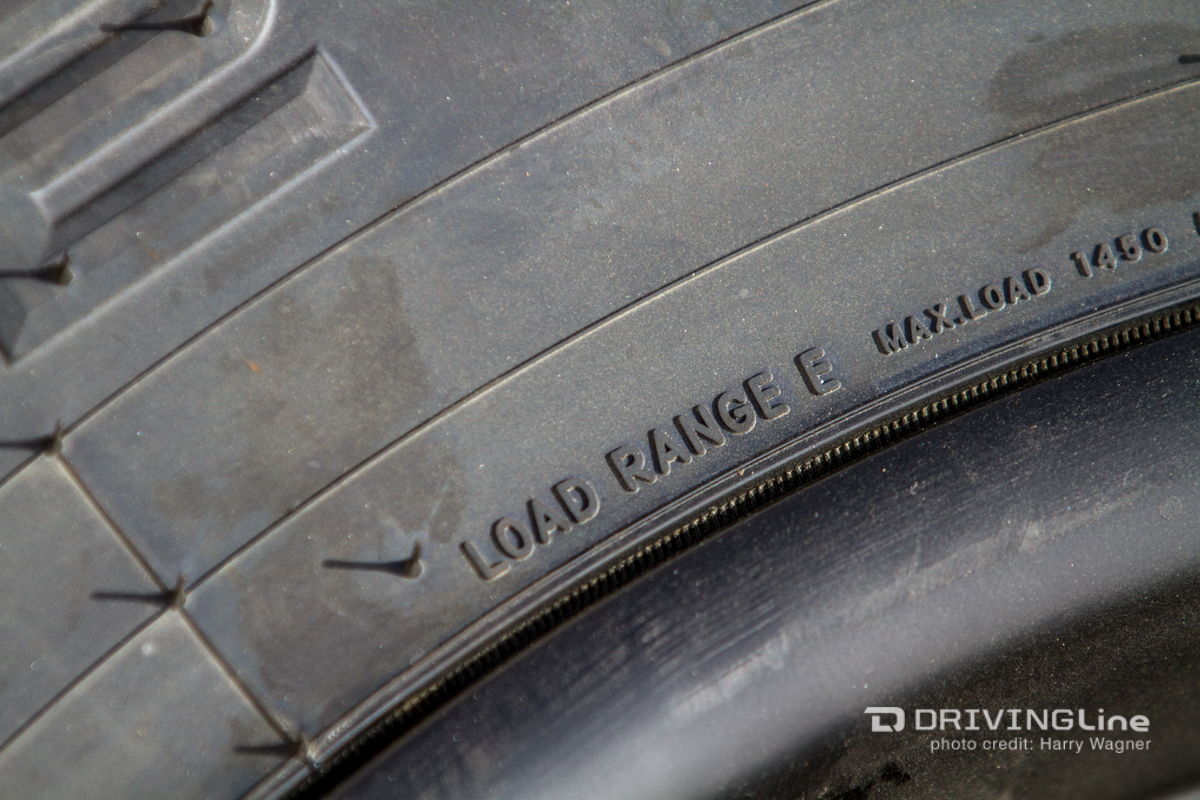
|
B arry's
Tire
Tech This is a series of articles on the technical aspects of tires, their care and usage. My primary purpose in these articles is to help people understand tires and thereby reduce the risks we all face every day. ..........and since tires is just about the only thing I know about.......... Please drop me a note if you have a topic you want to see: Barry@BarrysTireTech.com |
|
The photo above is of a "greige roll" - a roll of tire cord, before it gets a coating of rubber by way of a machine called a calendar. The roll has tiny (and breakable) cross cords (called a weft) to hold the cords in proper position during the calendaring operation. Once calendared, the fabric is taken to a Bias Cutter and cut to width and angle as specified. In the case of radial tires, it's straight across. Ply Strength and Load Ranges Preface: I am going to talk about plies, not belts. The term "Body Ply" would mean the same thing. The plies go bead to bead, where the belts are only under the tread. The way this appears on a tire is:
with the polyester being the plies, the steel being the belt, and the nylon being the cap plies. I am going to cover Belts in another article. In order to talk about Load Ranges and ply strength, I need to talk about tire cord. Tire cord is very much like the thread in your clothing - only thicker and it isn't woven (sort of!). It's very much like string where a bunch of fibers are combed into the same direction, then twisted. (Remember the spinning wheel in Sleeping Beauty? Twisting like that!) Tire cord comes in deniers (den-ee-ers) - grams per 9000 meters. (Yeah! I know that is weird, but that's how they did it way back, so that's how it is done now!) Polyester tire cord comes in 500 increments, with 1000 and 1500 most common. Nylon = 840 and 1680. These are twisted in one direction and 2 or 3 of those are twisted together in the other direction. A way to express this is 1000/2 or 1000/3, where the number after the slash is the number of cords twisted together. Obvious a 1000/3 cord is 50% stronger than a 1000/2. But it gets more complicated! |
|
To the right is a photo of tire cord taken from a greige roll. Notice the tiny cross cords (weft). A greige roll consists of a lot of individual cords, assembled at a certain end count. In the US we use "ends-per-inch" (epi). Different end counts result in different ply strengths in the finished tire. This greige roll is calendared with thin layers of rubber on both sides in preparation for use in a tire. The specifications for the tire will include the end count of the fabric being used. To further complicate things, for the calendaring operation to be effective, there is an upper limit in epi - otherwise the rubber won't completely surround the cords. This is important for the plies to act in unison. Note: There is also a lower limit in epi, because the fabric has to expand evenly during part of the manufacturing process. |

|
| The easiest way to talk about the strength of the plies, is to look at something similar - thin walled pressure
vessels. In other words, a pipe or tube. In essence, a tire is a modified
tube with part of the tube being the rim.
From Wikipedia, the formula for the stress in a thin walled pressure vessel (tube) is:
where: σθ = hoop stress P = pressure r = radius of the tube t = tube thickness The important part is that for more pressure, the stronger the plies have to be. The same goes for the size of the tube (analogous to tire size): Larger needs more strength. Could you make a tire without ply cord - like purely out of rubber? Yes you can, and the earliest tires were exactly that!. But using cords not only makes the tire thinner and lighter, but makes it less costly as well. When considering ply strength, we don't consider the load on the tire. What we do consider is that we are talking about flexing - which means fatigue. To account for that, the ply strength is increased by a factor - about 4 or so. That means the bursting pressure of tires is many times the rating pressure. The calculations I am referring to take into account that increased ply strength. |
|
There are 2 approaches that can be taken when designing tires:
I'll talk about the second one first, because it is so plentiful and it's the one that seems to cause the most issues. |

|
|
But first a diversion: Radial tires are called that because the ply cords lay in the radial direction (bead to bead, straight across). This is a problem because there is nothing but rubber holding the tire together circumferentially. For this reason ALL radial tires are belted - even though normally we don't say that. This was the innovation that Michelin invented in 1946. Prior to that, ply cords were at an angle and in pairs (Angle Left and Angle Right is the industry nomenclature). 2 plies, 4 plies, etc. We call these "Bias tires", although the terms "Cross Ply" and "Diagonal" are also used. The cross plies have strength in both the radial and circumferential directions, which is why it was used for so long! Unrestricted (no belt!), an inflated radial casing tries to form a circular cross section. That's the lowest stress level. By contrast bias tires have a naturally flattened oval shape - and the lower the ply angle, the flatter the oval. But there is an upper limit, due to the ability to manufacture the tire consistently. That's why old bias ply tires had such high aspect ratios. But add a belt, and any aspect ratio is possible. Note: It is common for radial plies to be considered at 90°, and the bias angle is measured consistent with that. Put another way, the bias angle is measured from the circumferential direction. Introducing the Reference Ply: OK, it's not called that, and I don't even know if there is a name for what they use for a single ply when calculating ply rating, but there has to be something (whatever the name), because that's how this works. Below is a page out of the 2020 Tire and Rim Association (TRA)Yearbook - the load table for Off-the-Road Haulage Service tires. I chose this because these kinds of tires still use Ply Ratings (in the parenthesis). |

|
|
Notice the first entry: 12.00-20NHS - a 16 Ply Rating (PR) has a max load of 2900 kg (6400#) at 450 kPa (65 psi). That means that a tire designed 8 times the strength of a 2 PR tire, will be able to carry the load indicated at the indicated pressure. (Provided the rest of the tire is up to the task!) So if you know the strength of the reference ply, you can design the plies for this tire. And for this entire table, ANY 16 PR tire could have the same construction as the 12.00-20NHS and perform similarly. This is a powerful tool for the tire engineer and saves a ton of work. Also notice that a few lines lower, a 14.00-20HNS 16 PR has a load carrying capacity of 3650 kg (8050#) at 375 kPa (54 psi). Those pressures are quite different!. Recall the formula above where the pressure and the size of the tube affected the stress level? This is what has happened here: The larger tire can't handle the stress caused by the pressure, so the rating pressure is reduced. And a side note: It is common for PR's to be grouped in pressure increments, so many size/PR combinations will have the same rating pressure. |

|

|
So where does Load Range come in? I am assuming the reader has noticed the term "Ply Rating". It was known that tires can be built using stronger cords than the reference ply - particularly with the advent of synthetic fibers, such as nylon, rayon, and polyester. So you can build a tire with fewer plies than the Ply Rating. Because humans tend to find shortcuts, the term "Ply Rating" was shortened to "Ply" and people would talk about 10 ply tires, meaning 10 Ply Rated tires.
Over time, some people assumed that 10 PR tires had 10 actual plies - and when they discovered they didn't, they felt cheated! |
|
Enter the Load Range. It's a way of stating the same thing, but in a way that doesn't reference the actual number of plies. Load Ranges come in letters: A, B, C, D, etc. (Yes! There is a Load Range A.) The convention is that Load Range is used for tires used on the street, but tires not used for the street are expressed as PR EXCEPT Load Ranges are only used by TRA - the US based tire standardizing organization. European and Japanese standards (and places that follow those standards) still use PR. In other words, only the US tire standards use Load Range (but you will see both LR and PR on many tires anyway, simply to avoid confusion.) But it's confusing anyway, isn't it! But it gets worse! |

|

|
The EXCEPTION of Passenger Car tires: The above was for everything (light truck tires, medium truck tires, etc.), but not passenger car (PC) tires And this is where we get into designing the ply strength for the individual tire size. Because PC tires are so price sensitive, and because so many are produced, ply strengths are calculated for each individual tire size/load rating (meaning Standard Load (SL) / Extra Load (XL)). That means that there aren't Load Ranges or Ply Ratings (Note: Old passenger car tire sizing systems used PR and vintage reproductions of PC tires still follow the old PR usage.) While designing ply strengths for each tire size hurts standardization and increases complexity, it can be justified, because of the cost to manufacture. This is common for all PC tires, no matter which standardizing organization is followed. |
|
But PC tires come in Standard Load (SL) and Extra Load (XL). Isn't that the same as 2 PR and 4 PR? No, but it is similar. The difference is that SL and XL cover the entire PC tire size range - which would not happen if we used the PR approach. (That pesky stress formula again!) And I should also mention that the ply strength of a tire is independent of the speed rating. So no matter what the speed rating, the ply strength is the same. (Note: That is not true for the number of cap plies!) |

|

|
And what that also means is that small radial tires do not need 2 plies. They could be built with a single ply, albeit a strong one. But because many consumers think otherwise, some manufacturers will use 2 plies, even though they don't have to. But for truck/bus tires (the industry calls them Medium Truck tires), a single ply isn't an issue, so most have a fairly large steel wire cord, but in a single layer. And you will notice that some LT tires come with 3 plies - and that's because many people think that is better and the marketing folks think it helps sell tires. I agree with the marketing folks, but I don't think it's necessary from a technical point of view. |
|
|